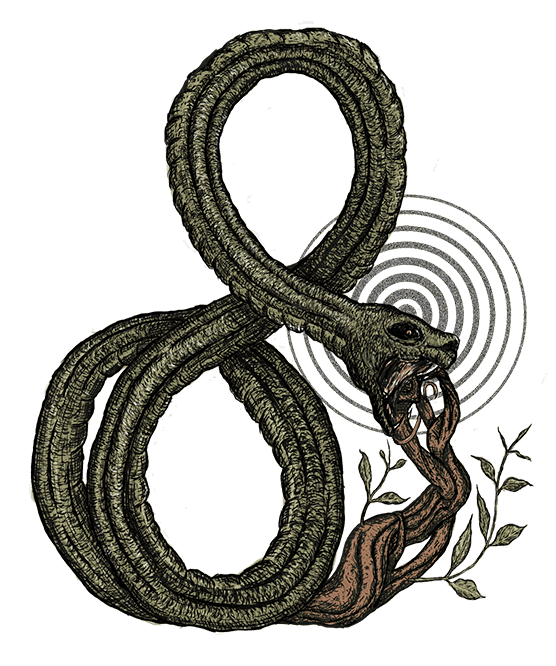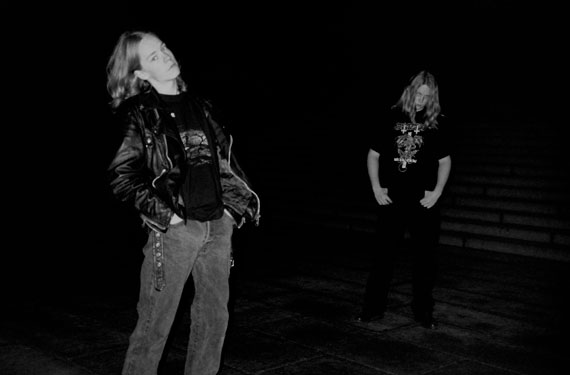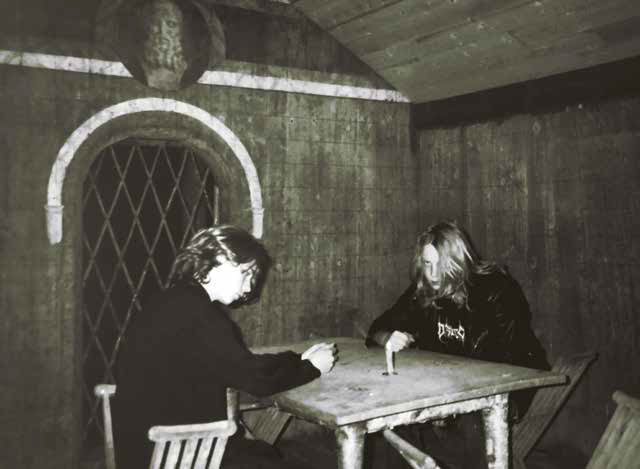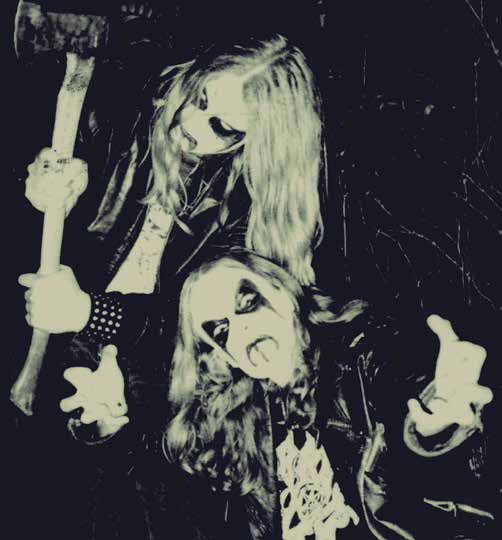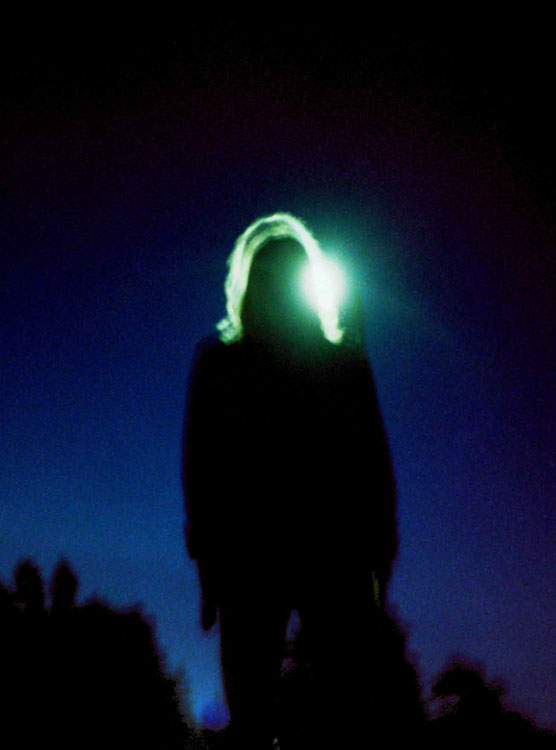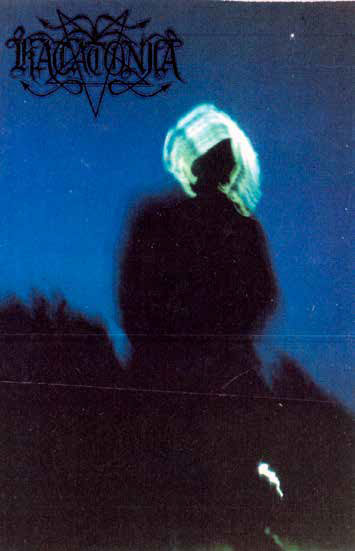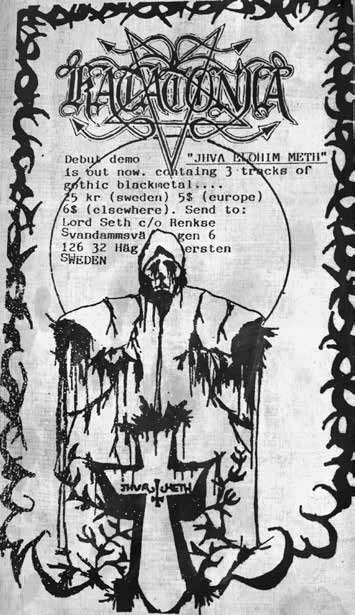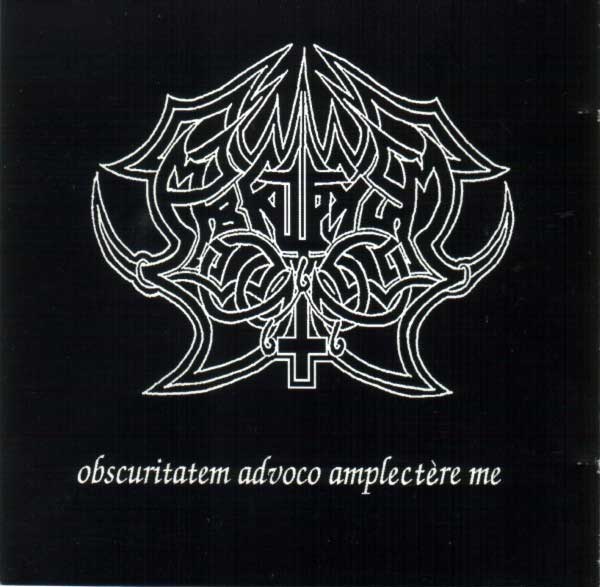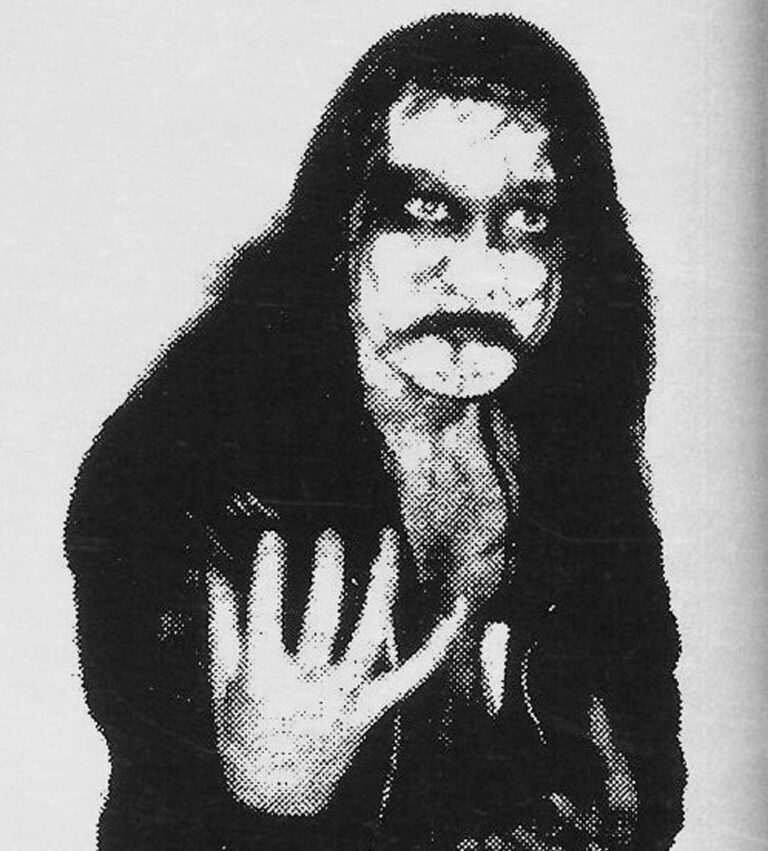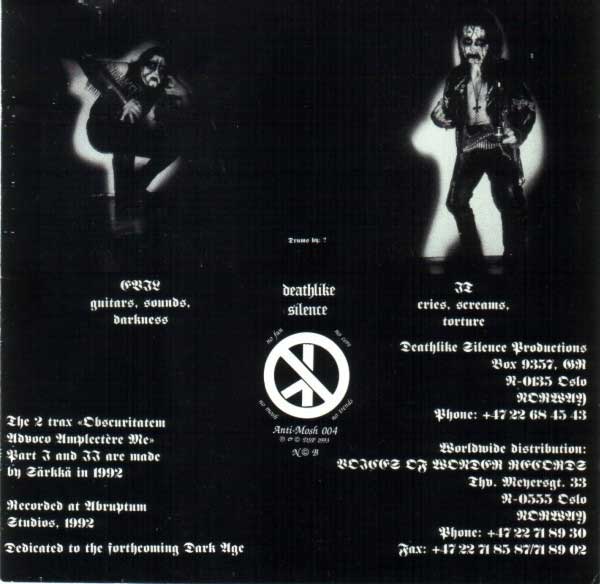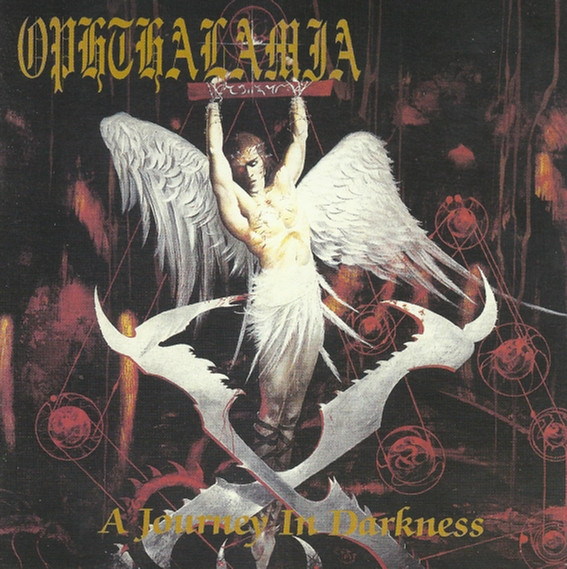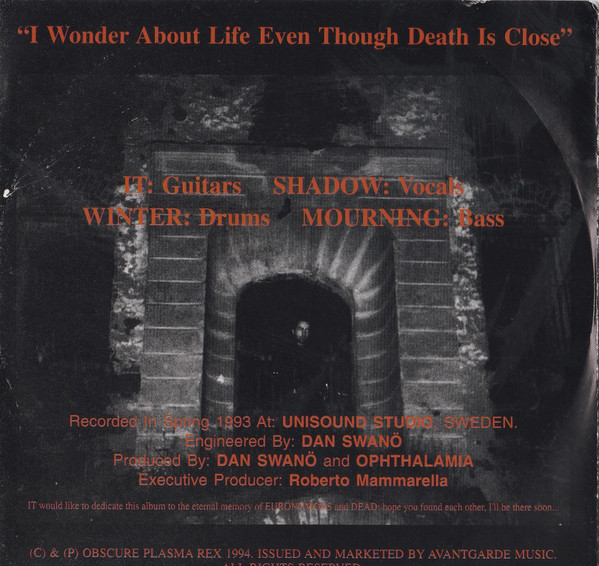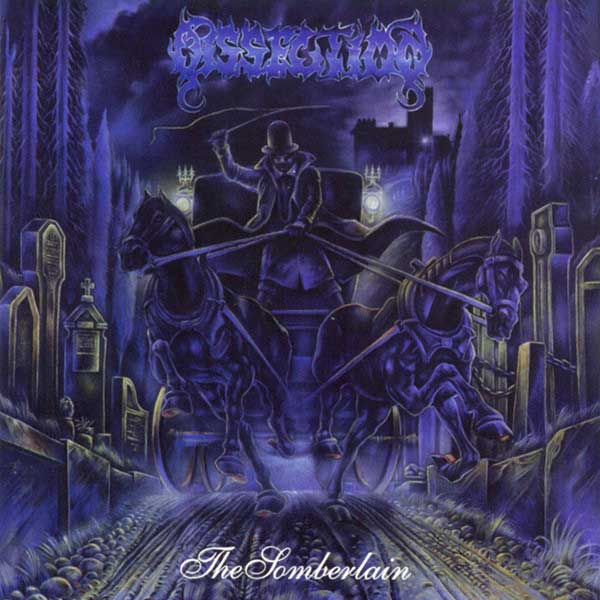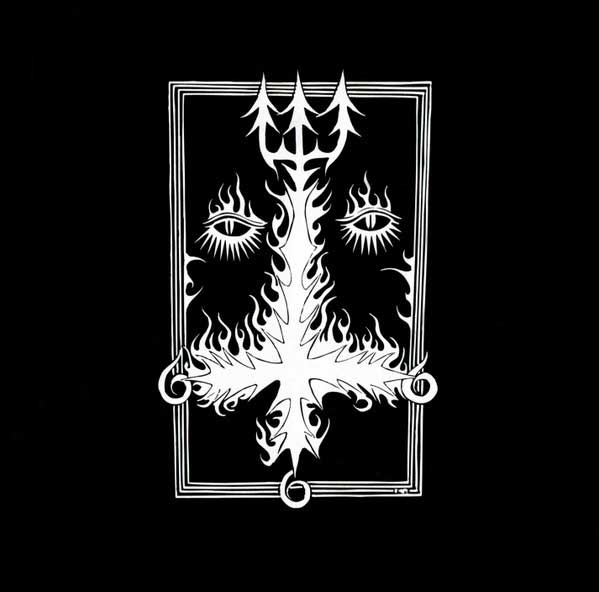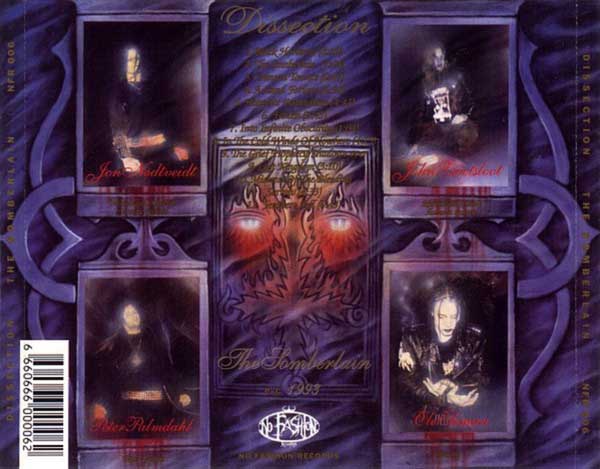Dan Swanö II
2024-01-10
by Niklas Göransson
Part two of the Dan Swanö series brings us into 1993 – a watershed moment for second-wave black metal. This era at Unisound Studio saw the birth of landmark albums such as The Somberlain, Dance of December Souls, and Those of the Unlight.

DAN SWANÖ: I wasn’t personally targeted for murder, but I was surely part of what Euronymous hated about death metal: that it had become more accessible. In the early days, I shuddered at the mere mention – it was the most evil and intimidating music imaginable. Far more so than black, thrash, speed, and doom metal. But, for some reason, you could take this music and do what you wanted and still call it death metal. Keyboards, clean singing, cellos, acoustic guitars, piano… everything we were doing with EDGE OF SANITY and more.
EDGE OF SANITY was a Swedish death metal band founded in 1989. After four demos, they signed with Black Mark Production in 1991.
SWANÖ: Black Mark used to market EDGE OF SANITY as ‘death metal is back’. And I’m like, ‘Mm, yeah – but in reality, I’m contributing to the watering down of a genre I once found terrifying.’ In some sense, I was complicit in death metal losing its evilness, or whatever you want to call it. And Euronymous was furious about this.
In June 1992, the same month that MARDUK’s “Dark Endless” was recorded, came the fourth issue of Close-Up – a Swedish metal magazine founded by Robban Becirovic. Besides organising gigs in the Östergötland province for many years, Becirovic also hosted a radio show called Power Hour. His co-host, Erik Sandberg, joined the publication as a writer.
Close-Up #4 featured transgressive interviews with both Euronymous – the MAYHEM guitarist – and BURZUM’s Varg Vikernes. The former raged over the state of death metal, mentioning Swedish bands THERION and AFFLICTED as particularly loathsome. This issue left a heavy imprint on the Swedish scene, somewhat akin to the impact MAYHEM’s interview in Slayer #8 had on Norway, as described by Mortiis.
SWANÖ: I heard about the death threats going around. I also knew people who were said to have carried out all kinds of criminal acts in the name of black metal. Thanks to Tony’s diligent networking, Finspång became a hub of sorts. I remember The Count (Varg Vikernes) from BURZUM passing through with a car trunk full of weapons – supposedly on his way to murder someone in Stockholm. So yes, I definitely had some insight into what was going on. You know, this whole True Satanist Horde (TSH) thing happened just a few blocks from where I lived.
True Satanist Horde was a satanic order founded by Tony ‘IT’ Särkkä of ABRUPTUM and OPHTHALAMIA. He’d conceptualised the organisation back in 1989, but it didn’t take physical form until ‘91. TSH recruited a number of prominent Swedish musicians, such as Jon Nödtveidt and Ole Öhman of DISSECTION, as well as MARDUK’s Morgan Håkansson. A female TSH member known as Mara set fire to THERION frontman Christofer Johnsson’s parents’ house in July 1992 – one month after Close-Up #4 was published.
SWANÖ: Tony traded demos and kept in touch with people from all over the world. And he started receiving lots of letters. Tony was all-in on black metal – totally focused, with complete tunnel vision. His upbringing had made him a very angry man; there was a genuine darkness festering within him.
Tony’s childhood was full of domestic abuse and similar trauma which, by his own account, left him emotionally scarred. He chose the name IT because of his deep sense of disengagement from humanity.
SWANÖ: I visited his place a few times when he lived in that one-room apartment where they held their meetings. Tony was truly in his element with TSH; it gave him an opportunity to attract followers and build something from the ground up. To be honest, I thought the whole black metal thing was a bit silly at first but as time went by, it grew increasingly nefarious and, ultimately, quite unnerving.
The open threats gained further credence from the numerous rumours circulating, which included tales of everything from church arson to manslaughter. Christofer of THERION, who’d been personally targeted by these people, knew about the murder EMPEROR’s Faust had carried out. Notably, none of them alerted law enforcement.
SWANÖ: When I recorded with bands, their friends would often come by to party. So, sure, I knew a lot which could’ve landed people in trouble – but I’m no snitch. If that’s how someone wants to spend their time, then by all means. It felt weird, though. It would’ve been around then that black metal lost its innocence to me. ‘Okay, so now someone has committed murder, and everyone thinks it is the greatest thing ever.’ I found the talk about sacrifices especially unsettling. Not to mention that guy from Uppsala who slit the throat of a pensioner.
All Hallow’s Eve, 1992 – following a True Satanist Horde gathering at IT’s place, Angramain’yo from AZHUBHAM HAANI stabbed a sixty-three-year-old man in the throat multiple times. Seeing as how this happened in Dan and Tony’s hometown, I imagine that spikes and bullet belts attracted some unwanted attention afterwards.
SWANÖ: Tony mostly kept to himself anyway. There were a few times when we were out and about… but he looked the way he did. Tony was short and dark and stuck out. And, more often than not – if he ended up in the town centre – really intoxicated. He’d always take a beating, the poor bastard. There was always some drunken yokel going, ‘Who do you think you are? Trotting around with inverted crosses, leather jacket, and so forth.’ So, I fully understand why he mostly sat at home.
What about you?
SWANÖ: I no longer considered myself ‘death metal’ by then. I’d undergone a shift of sorts earlier that year following the recording of “Unorthodox” (EDGE OF SANITY). I remember the train ride home after mixing it; I listened to the album and said to myself, ‘Right, this is pretty much all I wanted to accomplish in terms of death metal. Fuck it, I’m done.’
Upon its January 1992 release, “Unorthodox” boasted a number of elements that were innovative for death metal. It had clearer melodies and leaned towards a more progressive style, with experimental inserts such as keyboards, bells, acoustic guitars, choirs, and clean vocals.
SWANÖ: I retreated a bit from extreme metal and started exploring all manner of strange styles and genres. That’s when I stopped walking around with a leather coat, hair dyed black, inverted crucifixes, and evil shirts. I also began distancing myself. I’d started feeling as if this wasn’t really my thing; I didn’t want to get mixed up in anything illegal. When someone is that much older, like Euronymous was, and wields such a huge influence over young and impressionable minds, it can get pretty fucking dangerous.
Ideological influence aside, what do you think about his music?
SWANÖ: I’m no super fan of MAYHEM, but what he did on guitar was fucking cool. No one played barre chords back in those days; everything was power chords and shredding, one-string-riffs and so forth. And then along comes Euronymous. The first thing that happens in “Freezing Moon” is an open E minor, just… BOM-BRING… big and bombastic.
Barre chords involve using the index finger to press multiple strings on the same fret, allowing guitarists to slide the root shapes of open chords up and down the fretboard, changing the pitch while keeping the harmonic structure intact.
SWANÖ: I got goosebumps from hearing him take that type of guitar playing, with colouration and minor notes, and create something completely new – while keeping the traditional instrumentation and without adding a bunch of weirdness. Euronymous’ way of writing riffs upended everything. Ole Öhman (DISSECTION) told me that their minds were utterly blown upon hearing some MAYHEM songs for the first time. From that moment, they started writing riffs differently.
The June 2021 issue of Sweden Rock Magazine features an extensive retrospective feature with former DISSECTION drummer Ole Öhman. He told Thomas Väänänen that the largest musical leap from their February 1991 “The Grief Prophecy” EP to the debut album came from Euronymous playing them an advance of “De Mysteriis Dom Sathanas”.
SWANÖ: When I first heard those riffs, I thought, ‘This Euronymous guy is cunning. And he clearly listens to a lot of really weird music.’ And that influenced him when he created his own black metal thing. Actually, I was doing some research into RUSH a while back and noted several similarities. They also play these huge open barre chords: the so-called Devil’s interval.
Also known as the tritone, this dissonant musical interval spans three whole tones, like F to B. Infamous for its tension-inducing sound, the Devil’s interval was largely shunned in early Western music – hence its diabolical moniker. Bands like RUSH blend this classical element with modern distortion; for example, in songs like “YYZ”, the tritone helps promote an ominous atmosphere.
SWANÖ: I thought, ‘Euronymous must have heard this because he plays the guitar the same way that Alex Lifeson (RUSH) did in 1977, but with full-on distortion and a completely different attitude.’ It’s dark and evil but still has an unmistakable vibe of classic rock. He fucks with it in a completely new way. I love shit like that – when you can hear how a guitarist builds on outside elements to come up with something groundbreaking.
Personal developments notwithstanding, Dan had only just begun staking out his place in black metal history. In July 1992, one month after engineering MARDUK’s “Dark Endless”, he recorded the classic KATATONIA demo “Jhva Elohim Meth”.
SWANÖ: That demo has a unique feel which, for some strange reason, never re-emerged on any of their albums. To me, “Jhva Elohim Meth” is sacred – it’s so fucking good. Being perfectly honest, I was a bit surprised when I first heard the music; it wasn’t at all what I expected. The KATATONIA boys didn’t exactly give off an evil black metal vibe. I initially assumed it would sound like PARADISE LOST because they spoke about little else. There was also a certain veneration for “Hammerheart” (BATHORY) in that they wanted their drums to sound just like it.
In Bardo Methodology #4 – which contains an extensive KATATONIA interview – the band’s guitarist Anders Nyström mentioned that his vision was to blend the melody of PARADISE LOST with the pounding grandeur of BATHORY.
SWANÖ: I played all the keyboards and a lot of the melodic guitar parts, entirely uncredited. Anders went, ‘Killer! Can you do it, so I don’t have to learn?’ I tried the best I could to make everything as good as possible. I was also meddling with their drum patterns, suggesting that they skip the fast parts. They didn’t sound very good at all.
KATATONIA drummer Jonas Renkse had only used small hobby kits before, so he found Dan’s studio drums overwhelming. Thus, following Dan’s advice, they decided to leave out the blast beats – which essentially birthed the KATATONIA sound. In addition, the material would never have captured these feelings of soothing northern melancholia so masterfully without the icy production.
SWANÖ: That type of production would’ve been impossible if they’d insisted on keeping the fast parts. There are no blast beats on “Hammerheart”, which is the key to its sound. But to be honest, it was a bit of an emergency solution – we were running out of time. Each time we got to the fast part of “Without God”, everything went to shit.
Initially, the first riff in “Without God” – ‘Human birds watch the sky…’ – opened with a classic 2/4 beat but slowed down after two rounds. The second riff, ‘I am God, creator of life…’, which is pretty much the backbone of the entire song, was also in 2/4.
SWANÖ: ‘This is where everyone will turn it off’, I told them, ‘All of your label plans will just… poof. Stick to mid-tempo, and I promise you it will turn out great.’ That kind of intervention wasn’t something I’d do very often – still to this day, only when absolutely necessary. To cover my own ass as the producer, if nothing else, I must take responsibility and lay down the law. So, it was a great relief that they respected my decision. ‘Sure, let’s do it!’
Later in 1992, another Swedish classic was immortalised under Dan’s watch, one with a radically different ambience; namely, ABRUPTUM’s “Obscuritatem Advoco Amplectère Me”, released the following year by Euronymous’ Deathlike Silence Productions. I don’t think Dan fully grasps how big of an impact this album had on the early Swedish black metal scene. It set the entire tone – more so in mood and mindset than in a musical sense.
SWANÖ: I have no idea, but that’s great to hear. I’m not sure how much you know about this recording – but if it is as you say, I’d rather not ruin the mystique for anyone. However, I can share a few memories that I don’t think will detract from anything. I think it started as a diabolical jam of sorts. They were experimenting with some kind of droning metal drenched in a strange, monotonous, and hypnotic ambience. All of their recordings were improvised; it’s not as if Tony would ever sit at home writing ABRUPTUM material.
Prior to this, ABRUPTUM had released two demos and an EP consisting of a harrowing hybrid of proto-black metal and death industrial.
SWANÖ: To promote the right frame of mind, we turned off the ceiling lights. My brother had built a lighting installation with lamps stolen from a traffic signal, but only the red still worked. So, it was pitch black except for that crimson glow. Really powerful – the mood was akin to the back cover of “Sad Wings of Destiny” (JUDAS PRIEST). I remember sitting behind the kit, hammering out the classic ABRUPTUM beats. Morgan played some down-tuned B chord. Tony only did the vocals; I suppose he wanted his hands free so he could cut himself and scream at the same time. And then things got a bit out of hand. One lasting memory is all the bloodstains on the brand-new wall-to-wall carpet.
“Obscuritatem Advoco Amplectère Me” was almost like a musical manifestation of the black metal self-harm culture, as perpetuated by the late MAYHEM vocalist, Dead. During the 90s, there were countless parties in Sweden with this album playing in the background while people sliced their arms to shreds.
SWANÖ: There was a drapery hanging between the recording room and the kitchen. I was at the controls whenever I wasn’t playing something, so I didn’t really see what went on in there. I know they got up to all kinds of gnarly shit with the box cutter we kept down there. The blade was ridiculously dull, which made it even nastier. But as I said, I didn’t actually witness much of it.
A plethora of rumours surrounded ABRUPTUM, and it was said that the duo subjected themselves to various degrees of torture: carved up chest and forearms, burned each other, drank melted candle wax, and so on.
SWANÖ: <laughs> Sounds familiar. One thing I do remember is that Tony, who suffered from claustrophobia, requested to be trapped under the studio’s two-seat sofa. ‘I’ll lie down here on the floor, holding a microphone, and you put the couch on top of me. That should trigger a panic attack.’ I thought it was cool as fuck, trying to capture this genuine terror of being trapped. Like, ‘That is fucking evil. That’s sick. It’s weird.’ But it’s what Tony wanted, so we helped bring his idea to life.
Tony and Dan collaborated on another studio project the same year, one far less dramatic: a promo called “Journey to Darkness” by Tony’s main band, OPHTHALAMIA. I’ve only been able to find one song – “Enter the Darkest Thoughts of the Chosen / Agony’s Silent Paradise” from the posthumous 2019 OPHTHALAMIA compilation, “II Elishia II”. This recording features brilliant vocals by All, who also sang on the early ABRUPTUM releases.
SWANÖ: That was another one of those freebies; ‘I have a gap in my schedule, so why not do something? Hopefully, it’ll get them a record deal with a studio budget’ – which, in turn, would bring me a whopping one thousand euros. Back then, I thought that was a fortune to record an album. And it worked, because the promo resulted in an offer from Obscure Plasma, which later became Avantgarde Music.
During the spring of 1993, OPHTHALAMIA recorded their debut album, “A Journey in Darkness”. It consists mostly of songs from the 1991 demo, “A Long Journey”. The new versions are performed tighter and better produced – but for some reason, I’ve always felt there is far more feeling in the originals.
SWANÖ: Well, for starters, I’d say the triggered drums ruin about fifty per cent of it. I’d just bought an Alesis trigger module – and this was during a phase when I insisted on exchanging the snare to make the drums sound more like Morrisound. But OPHTHALAMIA had the wrong drummer for it. Bempa did a lot of cool stuff, and there are a few passages where he played in a manner where the drums couldn’t be triggered. Then, I had to use the acoustic snare with a lot of flanger and shit, because it didn’t sound very good at all.
Alesis trigger modules convert acoustic hits into electronic signals which, in turn, activate custom drum sounds. This allows for consistent and studio-quality drum tones without extensive tweaking.
SWANÖ: The advantage of triggered drums is how they typically sound good straight off the bat. However, that means everything else must be produced similarly. Otherwise, it will sound as if you’ve taken the bass drum and snare from a real album and the rest from a demo: it doesn’t work. Furthermore, back then, there was a ten-millisecond-delay between the drumstick hitting the snare and a sample emerging from the Alesis module. That’s an eternity in this context, and the groove of a drummer definitely falls within these parameters.
The acoustic snare will also be present in all the cymbal and tom mics – but ten milliseconds before its electronic counterpart.
SWANÖ: It creates a certain… I don’t know; it sounds a bit off, maybe? If you don’t fully understand what it is you don’t like about the album, that might be it. It doesn’t sound like a human drummer. But it’s really powerful and heavy and… studio-sounding. Also, if the production ends up too clinical, you peel off some of the band’s unique vibe. Triggering both the kick and snare, as I did on “A Journey in Darkness”, gives it a certain touch that I only noticed in recent years when re-mastering it. ‘Fuck, this isn’t good.’
The re-mastered version can be found on the 2017 Peaceville LP re-issue. It also includes liner notes by Dan.
SWANÖ: It could also come down to less passionate playing. “A Journey in Darkness” felt a bit like re-recording the demo. When bands do pre-productions before making an album, it’s not unheard of that the demo has more feeling. It can turn into, ‘Okay, so we’re doing this song again – but even more thorough and with a greater focus on tuning and tightness and everything else we didn’t necessarily fuss over for the demo.’
For the vocals, Tony brought in Jon Nödtveidt of DISSECTION. Fantastic efforts, but I’ve always preferred All’s Dead-reminiscent voice for OPHTHALAMIA.
SWANÖ: I think Jim (All) and Tony had a fight over something. They’d often be at each other’s throats for this or that – mostly drunken – reason. ‘Go fuck yourself, you’re out of the band!’ And then they’d make peace again. I never really knew when anyone was a member of anything. Honestly, it had completely slipped my mind that Jim was even part of OPHTHALAMIA. I told Tony, ‘You should do it, you have a fucking killer growl.’
For reference, check out IT’s vocals on the first OPHTHALAMIA demo or ABRUPTUM’s “De Profundis Mors Vas Consumet”.
SWANÖ: ‘No’, he protested, ‘Jon is better!’ Tony had poor self-esteem. I don’t think anyone else told him straight up, ‘Damn, you have a great voice!’ I was probably the only one who ever said that, and I can’t imagine he gave a shit about my thoughts on the matter. Perhaps Tony had plans of playing live with OPHTHALAMIA? Because I doubt that he’d be able to pull off growling and playing guitar at the same time.
Tony’s decision to bring in a new singer would have implications far beyond OPHTHALAMIA. While tracking his vocals, Jon took a liking to both the studio and Dan’s way of working. As such, he returned shortly thereafter – in March 1993 – to record DISSECTION’s debut album, “The Somberlain”.
SWANÖ: Outstanding material. Shockingly good, I must say. The whole recording is so fucking live, too: two guitars, drums, and then just, ‘Go!’ No click-tracks or punch-ins. Totally genuine. What’s even weirder is that Jon wrote the opening track – “Black Horizons”, my favourite – in his head on the bus from Strömstad. But there was a lot of hassle when they recorded it: rehearsing, adjusting, and rearranging parts. It was ‘the new song’.
log in to keep reading
The second half of this article is reserved for subscribers of the Bardo Methodology online archive. To keep reading, sign up or log in below.
